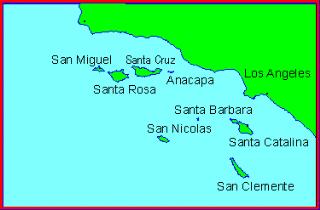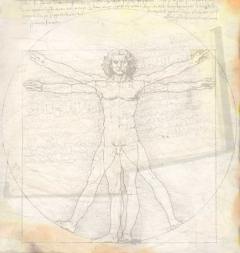|

|
| the california channel islands |
Senators Feinstein and Boxer Urge Senate Opposition to House Measure to
Limit Public Access to Santa Rosa Island
Senators Boxer and Feinstein oppose measure by House
Armed Services Committee to transform Santa Rosa Island into private game preserve for the military
By: Feinstein office
Published: May 5, 2006 at 08:20
|
|
U.S. Senators Dianne Feinstein and Barbara Boxer (both D-Calif.) are urging the Senate to firmly oppose a
proposal by Representative Duncan Hunter (R-Calif.) to limit public access to Santa Rosa Island. The island is part of the
Channel Islands National Park, located off the coast of Southern California.
"Santa Rosa Island is home to rare and
endangered species of island birds and fox, beautiful fields of wildflowers, rocky tidal pools, unique fossils, and Chumash
sandstone carvings. It's critical that the National Parks Service is allowed to do its job and protect this integral part
of California's historical and natural heritage," Senator Feinstein said. "Senator Boxer and I will do everything we can to
oppose any effort to turn Santa Rosa Island into a private hunting reserve for only members of the armed services, veterans
and their guests. I support recreational activities for our troops and veterans, but I believe that all taxpayers alike deserve
the right to enjoy this local recreational retreat."
"As part of our National Park system, Santa Rosa Island is a natural
treasure that belongs to all of us – and its access to the public should not be limited," Senator Boxer said. "I will
be working with my colleague Senator Feinstein to ensure that this misguided plan does not become reality."
"I commend
Senator Feinstein and Senator Boxer for introducing this resolution that recognizes the importance of Santa Rosa Island and
the Channel Islands National Park," said Representative Lois Capps (D-Calif.), who represents the coastal area where the islands
are located. "The continued attempts to kick the public off the Island and continue indefinitely the trophy hunting of non-native
deer and elk on Santa Rosa is a terrible idea and I have been working hard to stop it. The Senators were critical in killing
this plan when it surfaced late last year and I am grateful for their continued help to keep Santa Rosa open for future generations."
Earlier
this week, the House Armed Services Committee, which Representative Hunter chairs, voted in favor of his proposal that would
limit public access to the island by extending the current practice of allowing privately organized deer and elk hunting expeditions.
These hunts require the closure of about 90% of the island to the general public for about 4-5 months each year.
The
measure would also prevent the National Park Service from carrying out a court-approved settlement to remove non-native deer
and elk from Santa Rosa Island by 2011. The deer and elk herds pose a threat to the island's 11 endangered species, including
the bald eagle, rare plants, and native birds and fox.
In response, Senators Feinstein and Boxer have introduced a
Senate resolution that would allow for continued public access to Santa Rosa Island and would ensure that the National Park
Service is allowed to properly manage and administer Santa Rosa Island in accordance with its policies and regulations. Today,
the Senate Energy and Natural Resources Subcommittee on National Parks announced that it will host a hearing on this issue
on Tuesday, May 16 at 2:30 p.m.
Twice before, Representative Hunter has unsuccessfully tried to transform the Island
into a trophy hunt preserve available only to members of the armed services, veterans, and their guests.
http://www.yubanet.com/artman/publish/article_35467.shtml
You
know, the article doesn't (of course) tell the story. Santa Rosa and the other Channel Islands are Chumash. OK, maybe not recognized sovereign, but
then the Santa Ynez Chumash are the only Chumash group to have received federal
recognition. But the island Chumash, who, obviously, no longer live on the islands, still know those islands are theirs, and that
their history is on and in the ground, on
and in the sea.
"Chumash
sandstone carvings" isn't all that's Chumash on those islands. My Chumash "father," Bob Rivera, worked hard for a long time to have
his band - the Coastal Chumash (which includes
the island Chumash) - recognized. He died before it happened, and then the recognition of the Santa Ynez Band and their Reservation (which is a good thing) made it way harder for
the other Chumash bands to get recognition
and land (a bad thing).
And I
guess this might sound goofy, but just because some archaeologist, bureaucrat,
historian, museum director, or anthropologist doesn't recognize the
nature and value of a place doesn't mean that the land doesn't hold the history
of the people in its rocks and soil. And there are people who know how to "know" or "read" the land.
Oh, pardon
me, but the inside of my skull itches with this stuff. Like even if "they" (those other guys, the bad guys, so to speak) knew what
was there, how much would they care? The US Army confiscated/took Makua Valley in Waianae In Hawaii to practice war on. Maybe
they need to practice war. But Makua
- it's name is a hint, it means "parent" - isn't just a valley. The mountains at the back of the valley are Kanehunamoku, the place
where the first man and woman the gods created
lived in their earthly paradise. There
are temples
in the valley and burials and a stream whose name tells you secrets
if you know how to hear them. There is a cave at one side of the mouth of the valley in which you can see the womb of Papa (Earth
Mother) and into which at solstice a shaft
of sunlight from Kane-the-eye-of-the-sun (the Creator)
shines.
Errgghh. I read this article yesterday about the archaeologist in South Carolina, I forget his name, who says what he's learned from his
digs is that there were people in North America
a very very long time ago, as much as 50,000
years ago. But other archaeologists say no way.
We all know the first people to come
to America came over the Bering land bridge 13 -15,000 years
ago. How do they know that? Did
they talk to anyone whose people know the
old stories?
Earlier
today in a digest from I forget which group there
was a link to website for the PBS series "Circle of Stories." One of the storytellers is Tchin, a Narragansett. On the site he says, "The Narragansett
people believe that they have inhabited the area now known as
Rhode
Island for over 30,000 years, coming originally from the seas, and made
by the Creator, "Cautonuit", along with all other living things."
But I'll
bet no archaeologist/anthro/whatever asked the Narragansett what their
stories and traditions tell them. No. That's
folklore, not science.
I guess
science is the new folklore, but the mainstream North American world doesn't
see that. Yet.
/.\/.\/.\/.\/.\/.\/.\/.\/.\/.\/.\/.\/.\/.\/.\/.\/.\/.\/.\/.\/.\/.\/.\/.\/.\/.\/.\/.\
Some more
Anyway,
yeah National Parks has the Channel Islands. And Santa Rosa has hunting of non-native
species until 2011 after which time the remaining non-native species are to be removed (I don't know how). But that guy, U.S. Rep. Duncan Hunter, really did propose, on or about May 1 or 2, making Santa Rosa Navy
property on which only armed service folks and their guests would be allowed to hunt.
It's not the first time he's made such a proposal, though.
I don't
doubt that Feinstein is guilty of grandstanding. I've yet to hear of a professional
politician who isn't.
My gripe,
not including what I think of hunting just for the fun of hunting and killing for trophies and thrills, is that the Chumash-ness,
and for that matter the Tongva-ness, of the Channel Islands is ignored, overlooked, abused, and so on.
These
islands - Huima/Wimat (Santa Rosa), Tukan (San Miguel), Limu (Santa Cruz), and Anacapa were essentially a Chumash nation,
with an antap government apart from mainland Chumash and Tongva. And their descendants
are the Coastal Chumash (among others).
Further,
we lose so much when we lose just one, what - memory? bit of culture? ?? In the names of Chumash places, these islands included, are part of a great big story,
a truth. Huima - in Hawaiian, for instance, it refers to the group. Limu - in Hawaiian it means seaweed, which is a resource. Tukan,
that's a little more challenging to recognize, but if I see is as Ku-kan then I see a) Ku - stand, upright, a male god, relating,
among other things, to canoe trees/logs; b) Kan - maybe Kane, man/male, a male god relating to, among other things, the sun,
the Creator, and fresh water; c) Ku-kanaka - upright person; d) Kulkulcan, not Hawaiian by name, but resembling the returning
Hawaiian/Polynesian god Lono/Rono/Ro'o, and, of course Quetzlcoatl of central America.
Kukan, by the way, was the island onto which the ocean current left huge redwood logs that floated down from the north,
making these Channel Islands rich with canoe-making resources.
All those
names, together with Tongva = Tonga (the Polynesian island) = Kona (the direction - south), and the Chumash name Muwu (now
Pt. Mugu, and in Hawaiian Mu = the first people and mumu refers to silence and to sound) and Lahui (in Hawaiian = the nation),
the name of the first Chumash "Queen" of the Channel Islands Chumash nation, talk about a relationship among Inca/Maya, Hawaii
and Polynesia, and the Chumash and Tongva peoples.
I just
think it's really important that this sort of knowledge not get lost, not be forgotten, ignored, overlooked.
|

